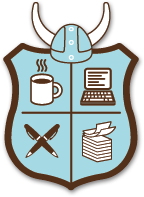James Scott Bell
@jamesscottbell
And so ends another November and the keyboard-clacking madness that is NaNoWriMo. It seems like each time I get a little something different out of it.
This time I worked on the third book in a series (the books will be published close together next year). I did some pre-planning along the lines I’ve suggested before. I killed that first day, hitting 3k words. And I was off to the races.
Only this race had some hurdles.
I did make the 50k mark on the last day, but barely. I lost at least four full writing days due to Bouchercon and a family matter that had me driving a car for about 16 hours over two days. But that’s part of the NaNo experience and a good lesson for writers who want to do this professionally—life often intrudes, but you find a way to write through it.
The book is not finished, BTW. Since I’m aiming for 70-80k it’s still in production. I’m trying to keep the NaNo MoJo working, though. Which leads me to the following lessons I pass along to you.
1. Deadlines work
Remember what Douglas Adams, author of The Hitchhiker’s Guide to the Galaxy, once said? “I love deadlines. I love the whooshing noise they make as they go by.” Every writer who has written under contract knows what he means.
The “pressure” of NaNo is good for a writer. If you fall too far behind you’re cooked. So you do whatever it takes to keep to a daily word count. You adjust your goals to make up for lost time.
Out of NaNo, I’m sticking to a SID — self-imposed deadline. Writing down the date you want to finish and putting it where you can see it daily helps.
2. Scrivener rocks
Scrivener was a big help this year. I made heavy use of the Outline View. Scrivener lets you color-code your scenes and then view them in an outline format. You can customize this view. I show my scene titles, the scene synopsis (which you can generate AFTER you’ve written the scene. Scrivener will even auto-generate a scene synopsis with one click), and my own added timeline, which is of tremendous importance. Thus, I can see at a glance what I’ve done and on what day and time the scenes take place.
I found this to be valuable as I began the writing day. I did my Grafton journal notes (see my post on that), then looked over the outline which showed what I’d already written, as well as future scene ideas. In this outline view you can instantly add a scene you think needs to go in between other scenes.
3. Trust but verify
In NaNo there are times when you have to be willing to try something risky, or follow an idea that pops into your head. Pure pantsers love that. No problemo, they say.
But there is a problemo. Unlike what some may advocate, not every spark of inspiration or tangent is good just because it’s new. Indeed, one of these could take you to a bog where your story drowns, and a good deal of NaNo is wasted.
The answer, I found, is to take ten minutes of breathing time when something totally unexpected pops up. Journal about it. Write some notes. (Here again Scrivener comes in handy. Each scene in your story has its own “Document Notes” section. You can record your ideas and thinking there, work things out).
4. Nothing beats full immersion in a story
All writers know the feeling of getting away from a WIP for awhile, then coming back to it and finding it hard to get into the story again. NaNo keeps you immersed in your story. This is good for you and for your novel. Not necessarily good for your spouse. When Mrs. B asked me in October if I was going to do NaNo again, I nodded. And she did not look pleased. So I tried to stick to the final lesson:
5. Don’t forget the important people in your life
I was intentional about trying to carve out evening time with my wife. But she knows me well after 34 years together. I get that faraway look as she’s talking…I have to ask her to repeat things…I nod my head at the wrong time….I excuse myself to go write something….I forget to pick up the milk at the store.
Once I got out of the shower thinking about my story. I went to the sink as usual, thinking, thinking, and put some gel in my hair, brushed it, then got ready to shave. And realized I had put shaving gel on my head and was about to lather my face with hair gel.
Most writers are like this. We’re strange creatures, rare birds, a little funny in the head. Our loved ones have to put up with this. So be kind! Take them out to dinner and try to forget, for a couple of hours, that you’re a writer.
Unless, of course, you see a particularly interesting character over at the bar…
So anybody got a major lesson or two they’ve learned this year on the writing of fiction?


